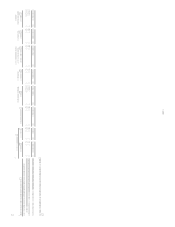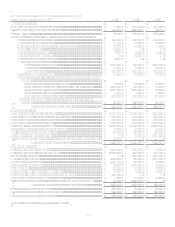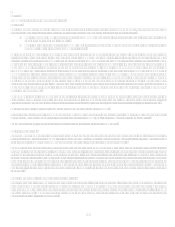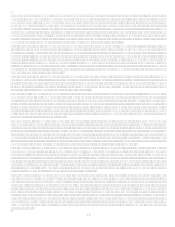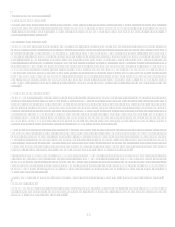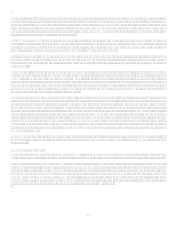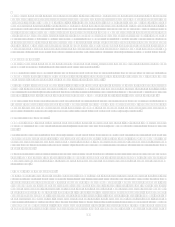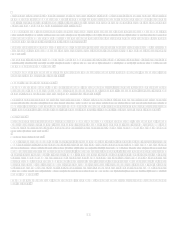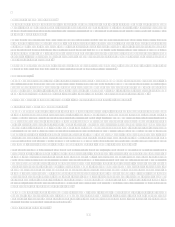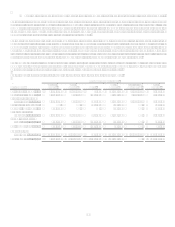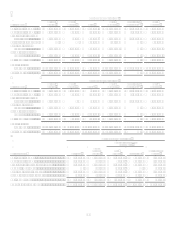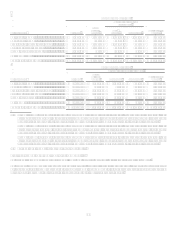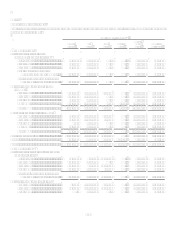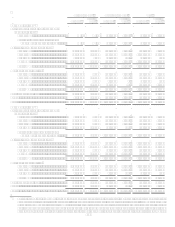Capital One 2008 Annual Report Download - page 112
Download and view the complete annual report
Please find page 112 of the 2008 Capital One annual report below. You can navigate through the pages in the report by either clicking on the pages listed below, or by using the keyword search tool below to find specific information within the annual report.94
Representation and Warranty Reserve
The representation and warranty reserve is available to cover probable losses inherent with the sale of mortgage loans in the secondary
market. In the normal course of business, certain representations and warranties are made to investors at the time of sale, which permit
the investor to return the loan to the seller or require the seller to indemnify the investor for any losses incurred by the investor while
the loan remains outstanding.
The evaluation process for determining the adequacy of the representation and warranty reserve and the periodic provisioning for
estimated losses is performed for each product type on a quarterly basis. Factors considered in the evaluation process include historical
sales volumes, aggregate repurchase and indemnification activity and actual losses incurred. Additions to the reserve are recorded as a
reduction to the gain on sale of loans. Losses incurred on loans that the Company is required to either repurchase or make payments to
the investor under the indemnification provisions are charged against the reserve. The representation and warranty reserve is included
in other liabilities. Quarterly changes to the representation and warranty reserve related to GreenPoint are reported as discontinued
operations for all periods presented.
As of December 31, 2008 and 2007, the representation and warranty reserve was $140.2 million and $93.4 million, respectively, of
which $122.2 million and $84.5 million were part of discontinued operations, respectively.
Rewards Liability
The Company offers products, primarily credit cards, that provide reward program members with various rewards such as airline
tickets, free or deeply discounted products or cash rebates, based on account activity. The Company establishes a rewards liability
based upon points earned which are ultimately expected to be redeemed and the average cost per point redemption. As points are
redeemed, the rewards liability is relieved. The estimated cost of reward programs is primarily reflected as a reduction to interchange
income. The cost of reward programs related to securitized loans is deducted from servicing and securitizations income.
As of December 31, 2008 and 2007, the rewards liability was $1.4 billion and $1.3 billion, respectively.
Derivative Instruments and Hedging Activities
The Company recognizes all of its derivative instruments as either assets or liabilities in the balance sheet at fair value. These
instruments are recorded in other assets or other liabilities on the Consolidated Balance Sheet and in the operating section of the
Statement of Cash Flows as increases or decreases of other assets and other liabilities. The Companys policy is not to offset fair value
amounts recognized for derivative instruments and fair value amounts recognized for the right to reclaim cash collateral or the
obligation to return cash collateral arising from derivative instruments recognized at fair value executed with the same counterparty
under master netting arrangements. As of December 31, 2008, the Company had recorded $583.5 million for the right to retain cash
collateral and $495.6 million for the obligation to return cash collateral under master netting arrangements. The accounting for
changes in the fair value (i.e., gains and losses) of a derivative instrument depends on whether it has been designated and qualifies as
part of a hedging relationship and, further, on the type of hedging relationship. For those derivative instruments that are designated
and qualify as hedging instruments under SFAS 133, the Company must designate the hedging instrument, based upon the exposure
being hedged, as a fair value hedge, a cash flow hedge or a hedge of a net investment in a foreign operation.
For derivative instruments that are designated and qualify as fair value hedges (i.e., hedging the exposure to changes in the fair value
of an asset or a liability or an identified portion thereof that is attributable to a particular risk), the gain or loss on the derivative
instrument as well as the offsetting loss or gain on the hedged item attributable to the hedged risk is recognized in current earnings
during the period of the change in fair values. For derivative instruments that are designated and qualify as cash flow hedges (i.e.,
hedging the exposure to variability in expected future cash flows that is attributable to a particular risk), the effective portion of the
gain or loss on the derivative instrument is reported as a component of other comprehensive income and reclassified into earnings in
the same period or periods during which the hedged transaction affects earnings. The remaining gain or loss on the derivative
instrument in excess of the cumulative change in the present value of future cash flows of the hedged item, if any, is recognized in
current earnings during the period of change. For derivative instruments that are designated and qualify as hedges of a net investment
in a foreign operation, the gain or loss is reported in other comprehensive income as part of the cumulative translation adjustment to
the extent it is effective. For derivative instruments not designated as hedging instruments, the gain or loss is recognized in current
earnings during the period of change in the fair value.
The Company enters into derivative agreements with its customers in order to transfer, modify or reduce their interest rate or foreign
exchange risks. As part of this process, the Company considers the customers suitability for the risk involved, and the business
purpose for the transaction. These derivatives do not qualify for hedge accounting and are considered trading derivatives with changes
in fair value recognized in current period earnings.
See Note 17 for additional detail.


